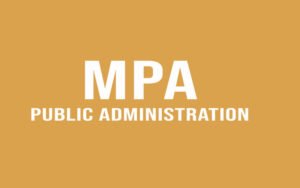What is a Health Maintenance Organization (HMO)?
Individuals seeking health insurance might locate many suppliers with distinct qualities. A prominent insurance provider in the health insurance marketplace is a health maintenance organization (HMO) offering coverage through a provider network.
Here are some main distinctions between HMO and PPO plans. To get coverage, you must stay within a network of HMO providers, and your PCP will refer you to specialists. HMO premiums are cheaper than PPO premiums.
How an HMO Works
HMOs offer monthly or yearly health insurance coverage. HMOs restrict member coverage to contracted doctors and other healthcare providers. Since healthcare providers benefit from patient referrals, these contracts result in cheaper rates than typical health insurance. HMO members may face extra limitations.
Consider premiums, out-of-pocket expenditures, specialty medical needs, and the importance of having a primary care physician when choosing an HMO plan.
An HMO is a governmental or commercial organization that offers customers primary and additional health care. The organization contracts with PCPs, clinical facilities, and specialists to ensure its health care network. Medical entities contracted by the HMO get a fee to provide various services to customers. HMOs can offer cheaper rates than other health insurance plans while maintaining high-quality treatment due to the agreed payment.
The 1973 Health Maintenance Organization Act created the HMO. President Richard Nixon signed a statute defining HMOs as “a public or private entity organized to provide basic and supplemental health services to its members.” The bill also mandates plans to offer primary healthcare at set monthly rates “under a community rating system.”
HMO Subscriber Rules
HMO customers pay a monthly or yearly subscription to access medical services in the organization’s network, but they can only see HMO doctors. Emergency care and dialysis are HMO-covered out-of-network treatments.
You may need to reside or work in the network to qualify for HMO coverage. The HMO may pay if a subscriber obtains urgent treatment outside the HMO network. Non-emergency, out-of-network treatment for HMO customers requires private payment.
HMOs provide affordable rates and low or no deductibles. The organization charges a co-pay for clinical visits, tests, and prescriptions. HMOs have modest co-pays—usually $5, $10, or $20 per service—making them cheap for families and companies.
The primary care physician’s role
HMO insureds must pick a PCP from the local healthcare network. PCPs are often the primary point of contact for health-related concerns. An insured individual must have a PCP recommendation to consult a specialist.
Some specialty services don’t need referrals. Screening mammograms seldom needs a doctor’s recommendation.HMOs cover specialists; PCPs direct insured members to follow co-pays. If a PCP quits the network, customers must pick another from the HMO plan.
HMO Rules
States and the federal government regulate HMOs. The 1945 McCarran-Ferguson Act mandates state control of the insurance sector, with federal laws only superseding state regulation when specifically stated. Health insurance regulation is primarily at the state level, with specific components falling under federal oversight, such as the HMO Act of 1973 and the Employee Retirement Income Security Act of 1974.
However, the federal government regulates HMOs. Under the 2010 Dodd-Frank Act, the Federal Insurance Office (FIO) oversees all insurance sector components. Similarly, the Affordable Care Act of 2010 established the Center for Consumer Information and Insurance Oversight (CCIIO) to supervise its implementation.
HMO vs. PPO
A PPO is a medical care plan that offers subscribers discounted services from health experts and facilities. Preferred providers are medical and healthcare professionals.
All PPO network providers are available to participants. Out-of-network treatment costs extra for insureds. Unlike PPO plans, HMO plans require members to see a specified provider. HMO plans lack deductibles, but PPO plans do.
Both programs provide specialization. The authorized PCP must refer HMO patients to specialists. PPO plans are the oldest and most popular managed healthcare plans because of their flexibility and low out-of-pocket expenditures. This is changing as plans limit provider networks and employ other cost-cutting measures.
Health Maintenance Organization (HMO) vs. POS
Point-of-service (POS) plans, like HMOs, require policyholders to select an in-network PCP and require referrals from that doctor for specialist coverage. POS plans cover out-of-network treatments like PPO plans, but policyholders pay extra.
A POS plan will pay extra for an out-of-network service if the policyholder obtains a PCP reference. POS rates are between HMO and PPO premiums.
POS policies demand co-pays, while in-network co-pays are usually $10–25 per session. PPOs have deductibles for in-network treatments, whereas POS plans do not.
Patients who travel regularly benefit from POS plans’ countrywide coverage. POS plans have large out-of-network deductibles, so patients who utilize out-of-network treatments must pay the whole cost until they hit the deductible. A patient who never utilizes POS out-of-network services may be better suited to an HMO because of the reduced rates.
If you seldom travel, an HMO plan is cheaper than a POS plan.
Pros and Cons of HMOs
Like any other alternative, you should examine the pros and cons of HMO plans before choosing one. Some of the program’s main strengths and downsides are below.
HMO advantages
Low cost is the main benefit of HMO membership. Fixed monthly or yearly rates are lower than standard health insurance. Low or no deductibles and cheaper co-pays are typical of these plans. Your medication costs less out-of-pocket. Billing is more straightforward, too.
You may also have to deal with the insurance. You chose your PCP to manage your treatment and care. Your representative will also promote services. It involves recommending specialist services for you.
Higher-quality care is typical in HMOs. Due to the recommendation for yearly physicals and early treatment,
Bad things about HMOs
HMOs limit how you can utilize the plan. Choosing a doctor for primary care and referrals would be best. The network must include this doctor. The fees for seeing a doctor outside the network remain your responsibility, even if no contracted doctor exists in your region.
Getting your HMO to cover specialist visits requires recommendations. Your PCP must send you to a rheumatologist or dermatologist for the plan to cover your visit. If not, you pay the total price.
Emergency medical claims have strict requirements. For instance, emergency definitions are frequently stringent. If your illness doesn’t qualify, the HMO won’t pay.
Pros
- Reduced premiums, deductibles, and co-pays.
- Your primary care doctor will manage your care and advocate for you.
- Better care.
Cons
- The planned network must include doctors.
- Your regular doctor must recommend you to a specialist.
- The plan only pays for emergencies that satisfy specified criteria.
What is Health Maintenance Organization (HMO) insurance?
HMO insurance covers covered persons for monthly or yearly costs. Patients who see HMO-affiliated doctors and other providers pay less than those with other health plans.
Examples of HMOs
Most significant insurers provide HMO plans. For instance, Cigna and Humana provide HMOs. An individual can choose between the Aetna HMO and Health Network Only plans.
What are the benefits of HMOs?
The key advantages are cost and care quality. HMOs have cheaper premiums than standard health insurance. This permits insured persons to receive better treatment from organization-contracted providers. HMOs usually have minimal co-pays and no deductibles. Mammograms are also available without recommendations for HMO members.
What distinguishes HMOs from health insurance?
HMO coverage is limited and cheaper for covered parties. However, traditional health insurance has higher premiums, deductibles, and co-pays. Health insurance policies are more versatile, and recipients don’t require a PCP to plan treatment. Health insurance covers certain out-of-network provider charges.
HMOs’ negative reputation: why?
Health Maintenance Organizations have a negative image since they have many restrictions. HMOs only enable insured parties to see doctors and specialists in their network; thus, they must pay the entire cost of any visit outside this group. Individuals who obtain medical services outside the HMO’s network must pay for them if they live in a particular location. The programs also require patients to pick a PCP who determines therapy.
Bottom Line
Health insurance matters to everyone. Personal circumstances, including health, wealth, and quality of life, determine the best option. The PPO and HMO are standard health insurance options. HMOs have cheaper out-of-pocket expenditures but stricter doctor-seeking requirements. Whatever you select, examine the pros and cons.
Conclusion
- Health maintenance organizations (HMOs) charge monthly or yearly fees for health insurance.
- An HMO is a collection of medical insurance providers that only cover care from contracted doctors and other providers.
- These contracts cut rates since healthcare providers have consumers steered to them, but they also restrict HMO members.
- Participants in HMO plans must first see a primary care physician.
- Alternatives to HMOs are PPOs and POS plans.
- HMO patients must first see their PCP, who will recommend them to an in-network specialist. A PPO plan lets you see a specialist without a referral.
- HMO plans require you to use their network of providers. PPO plans have a network of providers, but patients can see other doctors.

























































